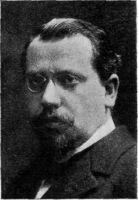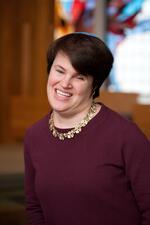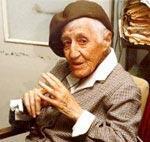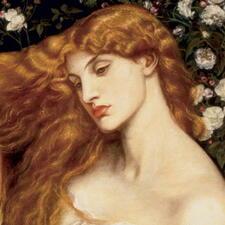Religion: Bible

Jochebed: Midrash and Aggadah
The midrash portrays Jochebed as a wise woman who was righteous and God-fearing. By merit of her good deeds, she gave birth to the three leaders of the Exodus generation: Moses, Aaron, and Miriam.

Mordecai Kaplan
Karaite Women
Family law and personal status of women are important aspects of both the daily life and the halakhah of Karaite communities. Karaite legal sources often deal with rules pertaining to betrothal, marriage, divorce, ritual purity, and incest.

Keturah: Bible
The marriage of Abraham to Keturah represents a secondary union, one that separates the procreation of offspring from the inheritance of immovable property (land), which in this case goes only to Abraham’s primary heir, Isaac—not to Keturah’s six children.

Keturah: Midrash and Aggadah
Keturah was one of Abraham’s wives. The Rabbis describe her as a woman of virtue, for which she was worthy of being joined to Abraham.
Killer Wife in Jewish Law and Lore
The Talmud states that if a woman is twice or thrice widowed, she is prohibited from remarrying because it is presumed that she is a killer wife and that her next husband will also die. This has been applied in post-Talmudic law, but also negated by some halakhic decisors.

Lauren Tuchman
Lauren Tuchman, the first blind woman ordained as a rabbi, is best known for her championing inclusive Torah and disability justice. Though she is ordained in the Conservative movement, most of her work has been in community organizing and other non-congregational settings.

Leah: Bible
Leah is the sister of Rachel, and many of the stories about her center around her turbulent relationship with her sister, as they are both Jacob’s wives. Jacob clearly prefers Rachel, and the sisters repeatedly compete with each other for Jacob’s affection. Leah and Rachel are remembered as the ancestresses “who built up the house of Israel” (Ruth 4:11).

Leah: Midrash and Aggadah
Leah is the sister of Rachel and the wife of Jacob. God blesses Leah with children; she has six sons and one daughter, and two of her sons become ancestors of two of the twelve tribes. She may not have been Jacob’s preferred bride, but she is interpreted as extremely selfless and generous.

Nehama Leibowitz
Although Nehama Leibowitz refused to acknowledge that she was a revolutionary in any way, ultimately her unique achievements changed Orthodox society’s perception of a woman’s capabilities and undoubtedly opened doors for the female Torah scholars who followed. Through her teaching, Leibowitz brought numerous people, including non-Jews, to a new conception of Torah study.

Lilith
Lilith’s character has evolved throughout the years. She began as a female demon common to many Middle Eastern cultures, was transformed by Medieval Jewry into Adam’s first wife, and was finally reclaimed by Jewish feminists as an icon.

Lot's Daughters: Midrash and Aggadah

Lot's Wife: Midrash and Aggadah
Lot’s wife was initially spared from the impending destruction of Sodom, but her unrighteous ways cause her to have an unhappy end. Midrash and Aggadah provide insight into her actions.
Maacah 4: Midrash and Aggadah
The Midrash and Aggadah regarding Maacah, daughter of Abishalom, who worshiped an idol, focuses mostly on her pagan worship of Asherah.
Maacah the wife of David: Midrash and Aggadah
Macaah, the wife of David, is a name for a non-Jewish woman taken captive during wartime to be a wife to her Israelite captor. Absalom, the son of Maacah and King David, grows up to be defiant and self-indulgent and acts against his father; this is attributed to him being the son of Maacah.
Maacah: Bible
It is claimed that Maacah is the mother of Asa, king of Judah from 908 to 867 B.C.E., which is problematic because the same woman is alleged to be the mother of Asa’s father. Maacah’s role appears most clearly as an official functionary in the Judean cult when Asa removes her from her position as gebirah (“great lady”) after she makes a cult object associated with the goddess Asherah.
Mahalath, daughter of Ishmael: Midrash and Aggadah
Midrash and Aggadah present both a positive and a negative take on the marriage of Esau, son of Isaac and Rebekah, to Mahalath, daughter of Ishmael.
Martyred Mother with seven sons (2MACC): Apocrypha
Following the passage of King Antiochus IV’s laws prohibiting the practice of Judaism, an unnamed mother leads a family through martyrdom.

Medium of Endor: Bible
The story of Saul’s visit to the medium at Endor suggests that various types of divination were well established in Israel. Notably, the story does not imply that the medium’s identity as a woman is significant, illustrating that being a medium was a chance for women to have a professional role in ancient Israel.
Merab, daughter of Saul: Midrash and Aggadah
Merab, daughter of Saul, was meant to marry David, but ended up being given in matrimony to Adriel the Metholathite. Rabbis in the Midrash and Aggadah discuss two different versions of events: one in which Merab marries David, and one where she marries Adriel.
Merab: Bible
Merab, one of the daughters of King Saul, is originally offered in marriage to David, whom Saul hopes to have killed. However, Saul’s plan fails, and Merab marries another man. The story of Saul’s attempt to arrange Merab’s marriage shows the social structures between fathers and daughters among the ancient Israelites.

Michal, daughter of Saul: Midrash and Aggadah
The Midrash and Aggadah provide insight into the marriage of Michal, daughter of Saul, to David, to whom she was loyal over her father, Saul. Michal was later punished for publicly disrespecting David.
Midwife: Bible
Midwifery is one of the oldest professions, and several biblical narratives refer to midwives. In addition, in one psalm God is metaphorically depicted as a midwife, delivering a person from danger. Israelite obstetrical practices were probably similar to ones known from other ancient Near Eastern texts.

Ministering Women and Their Mirrors
Women who ministered at the entrance of the Tabernacle gathered around to donate their copper mirrors (Exodus 38:8), which were then smelted down to make the basin where the priests would wash before entering the sanctuary. The women may have served as guards, warding off evil with their mirrors. Midrash, however, conjectures that the women used these mirrors to seduce their husbands in Egypt, raising up the hosts of Israelites.


